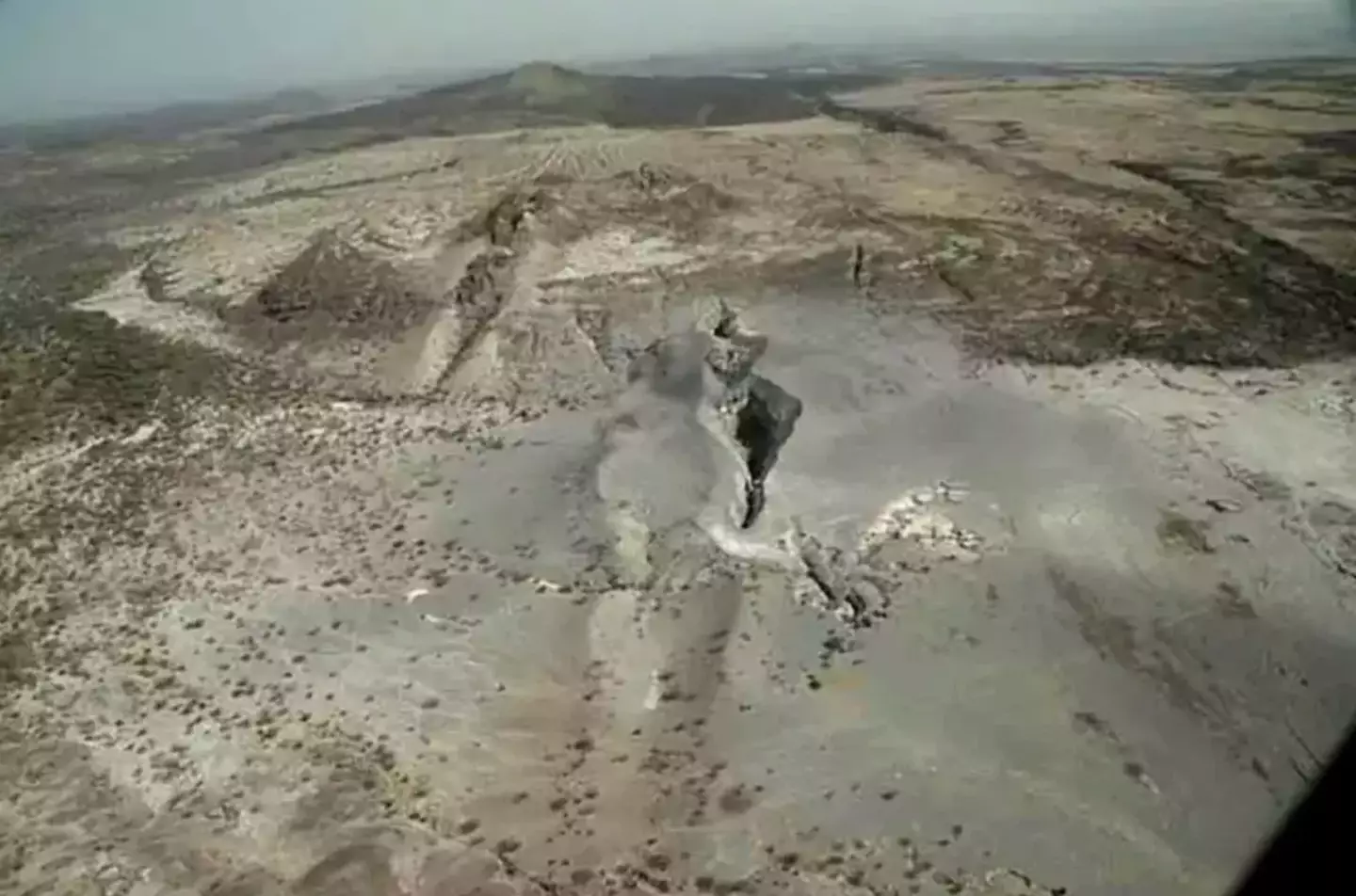A large crack formed in Kenya in 2018, opening up many theories about the geological factors which caused it
Scientists have come up with some theories about how the continent of Africa is splitting in two.
If you were to look at the Earth tens of millions of years ago, it would look very different from the blue and green space marble we call home today.
Around 200 million years ago, the continents were all concentrated together in one super-continent called Pangea.
But over time, these broke up and drifted apart, until they arrived at the configuration we all know and love today.
Even within our lifetime as a species, there have been huge changes, with rising sea levels and melting ice getting rid of land bridges and cutting off communities.
Of course, this is not on the scale of continental drift which happens over a very long time.
Continental drift is the movement of the Earth’s crust as tectonic plates grind into each other on the surface of the mantle.
If you want an image of this geological process in action, it seems that Africa is currently a good place to see it unfolding before our very eyes, though of course on a geological timescale.

The Great Rift Valley in Kenya. (Martin Harvey / Getty)
That’s because geologists have noticed several cracks appearing up and down the enormous continent.
Some scientists have suggested that this is due to the African tectonic plate breaking in two, which could result in landlocked countries like Zambia and Uganda having their own coastlines in the distant future.
But this is not the only theory that geologists have about the how the crack has formed.
Others have suggested that the cause could be soil erosion.
Others still, including Lucía Pérez Díaz – a postdoctoral researcher at Royal Holloway University of London – think it’s a combination of both.
Díaz suggested it could be softer soils filling in a rift-related fault and leading to the cracks we are seeing on the surface.

Part of Africa could break off from the rest. (University of Rochester)
Her research suggested that over the course of tens of millions of years the ocean will begin to fill in the gap as the rift reaches the coast.
Once the ocean floods in sufficiently then it will effectively cut off one part of Africa from another.
A similar event, albeit with different causes, happened when the British Isles were cut off from mainland Europe.
Until around 450,000 years ago the British Isles were connected to Europe, but the erosion of a valley in what is now the English Channel caused a catastrophic flood as the sea rushed in.
This left what would have been the westernmost extremity of Europe as a brand new set of islands.